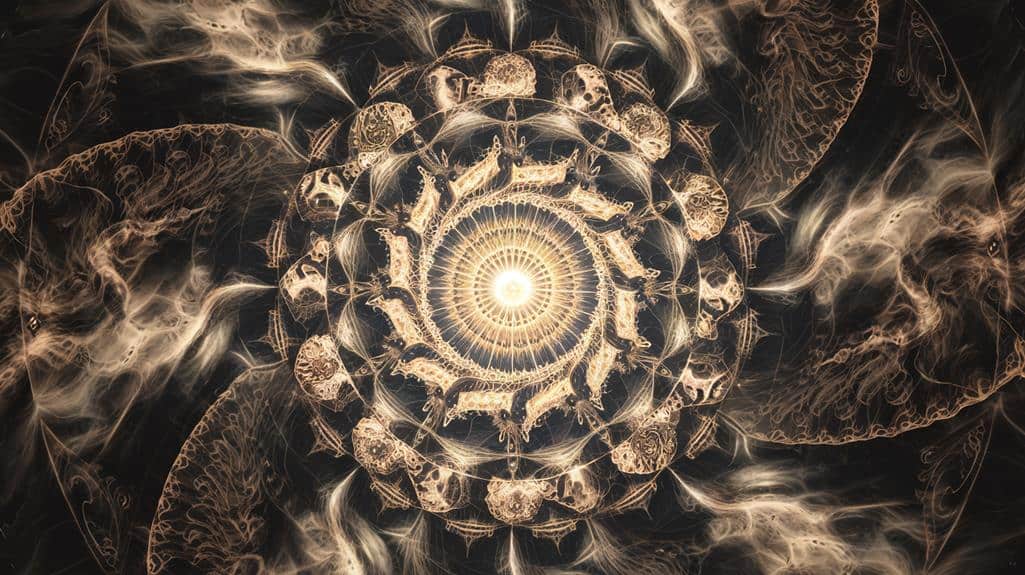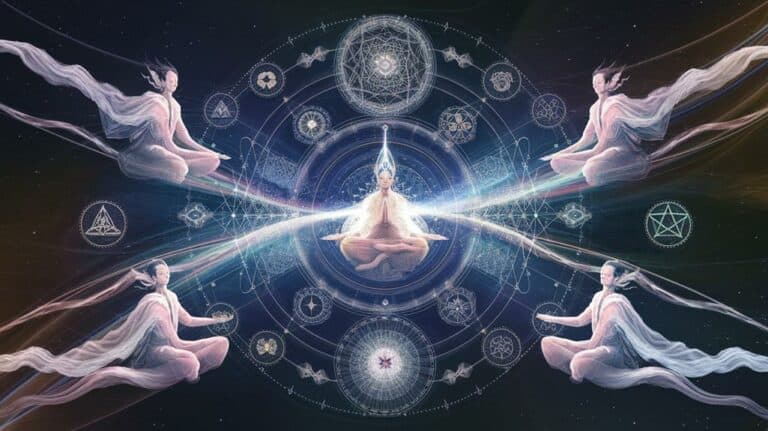The Concept of the “Perennial Philosophy” in Mysticism
You’ll find that the concept of “perennial philosophy” weaves through history like a golden thread, connecting seemingly disparate spiritual traditions into a unified tapestry of human experience. Whether you’re exploring ancient Vedic texts or medieval Christian mysticism, you’ll notice striking similarities in how mystics describe their encounters with ultimate reality. While religious scholars have long debated whether these parallel experiences point to a universal truth or merely reflect common human psychology, the implications of this philosophical framework continue to shape modern spiritual discourse and interfaith understanding in ways that might surprise you.
Historical Origins and Development
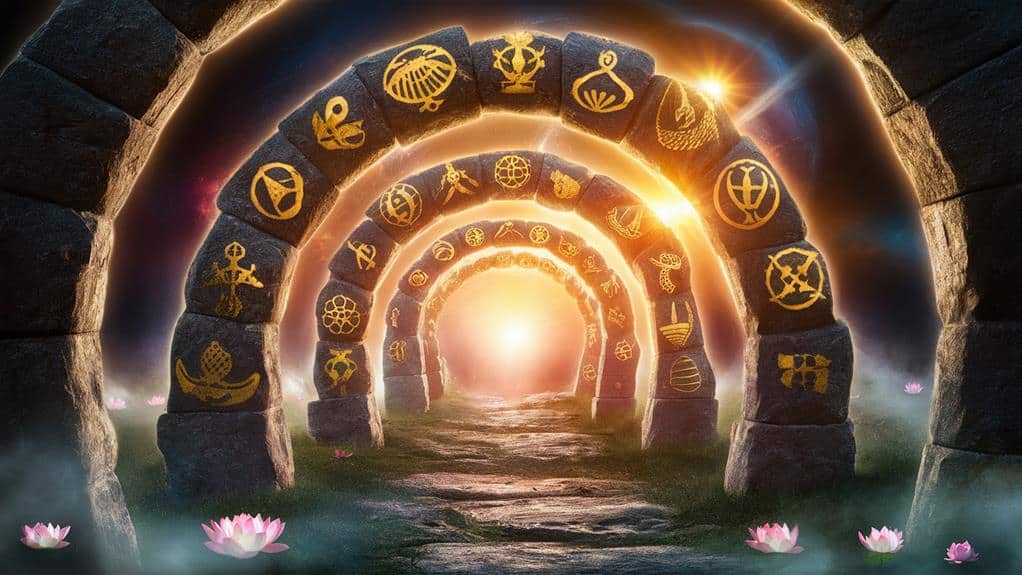
The perennial philosophy emerged as a spiritual worldview in ancient civilizations, with its earliest documented expressions appearing in Vedic texts from India around 1500 BCE.
You’ll find its threads woven through the mystical traditions of every major culture, from the Egyptian Mystery Schools to the Greek philosophers who sought divine wisdom in their contemplative practices.
As you explore deeper, you’ll discover how this timeless wisdom gained momentum during the Renaissance, when scholars like Marsilio Ficino began translating ancient texts and recognizing the striking similarities between different spiritual traditions.
In the modern era, you’ll encounter Aldous Huxley‘s groundbreaking work “The Perennial Philosophy” (1945), which crystallized these eternal truths for contemporary audiences.
You’re part of a lineage that stretches from ancient sages to modern seekers, all recognizing that beneath the surface differences of religious expression lies a unified understanding of ultimate reality.
The development of perennial philosophy hasn’t been linear – it’s ebbed and flowed through history, emerging whenever humans have sought to understand their deepest nature and connection to the divine.
Core Principles of Perennial Philosophy
Building upon these historical foundations, perennial philosophy rests on several unchanging principles that have persisted across cultures and epochs.
You’ll find at its heart the recognition that divine reality forms the essence of all living things, while your everyday world represents just one layer of a multifaceted existence. This universal truth transcends your individual beliefs, connecting you to an eternal wisdom that’s been expressed through various religious and mystical traditions.
When you explore perennial philosophy deeper, you’ll discover its assertion that you can directly experience this ultimate reality through contemplative practice and inner transformation.
You’re not bound by dogma or institutional authority – instead, you’ll find that your own consciousness serves as the gateway to transcendent understanding. The philosophy maintains that you’re already united with the divine ground of being, though you may not yet realize it.
You’ll notice how these core principles emphasize unity over division, wisdom over mere knowledge, and direct experience over theoretical understanding.
They invite you to recognize that beneath the apparent diversity of spiritual traditions lies an essential truth that’s waiting for your discovery.
Universal Sacred Truths
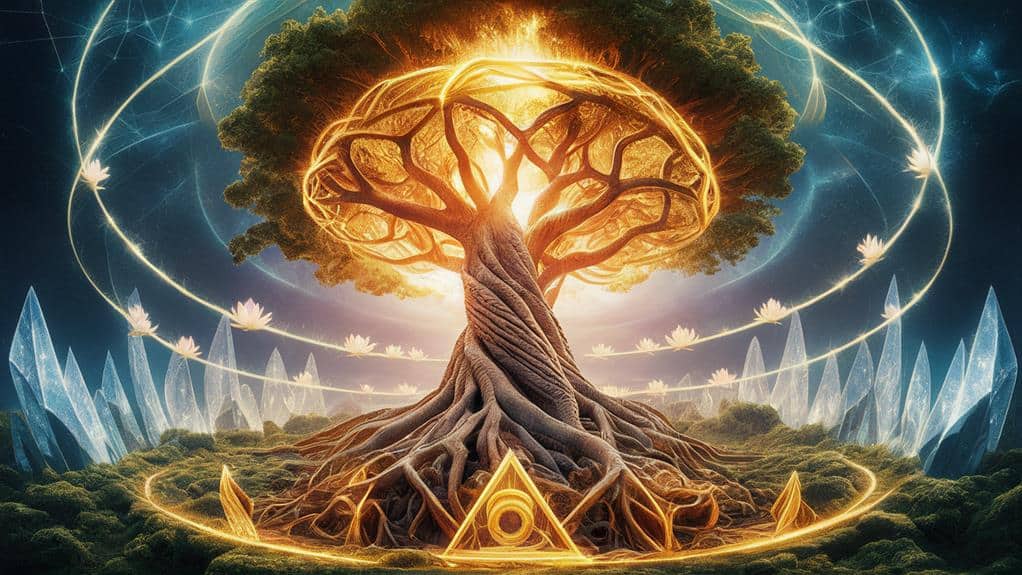
Across diverse spiritual traditions, universal sacred truths emerge as common threads that connect humanity’s understanding of divine reality. You’ll find these eternal principles woven into the teachings of mystics, sages, and enlightened beings throughout history, transcending cultural and geographical boundaries.
They point to a unified reality that exists beyond the material world, where you’ll discover the interconnectedness of all beings and the presence of an ultimate, ineffable truth.
When you explore deeper into these universal truths, you’ll encounter recurring themes: the inherent divinity within all creation, the illusion of separateness, and the transformative power of direct spiritual experience.
You’re not just observing these truths; you’re experiencing them as living wisdom that can reshape your understanding of existence. The sacred texts and mystical traditions don’t merely describe these principles – they invite you to verify them through your own inner journey.
Through contemplation and spiritual practice, you’ll find that these universal truths aren’t abstract concepts but living realities that can illuminate your path toward self-realization and divine understanding.
Cross-Cultural Mystical Experiences
Throughout recorded history, mystics from vastly different cultures have reported strikingly similar experiences during their spiritual encounters, suggesting a shared universal dimension of consciousness. You’ll find these parallel accounts spanning across Buddhist meditation halls, Christian monasteries, Sufi gatherings, and Hindu ashrams – where practitioners consistently describe encounters with limitless light, ineffable unity, and transcendent peace.
When you examine the testimonies of mystics, you’ll notice recurring patterns that transcend religious and cultural boundaries. Whether it’s Meister Eckhart’s description of the “divine ground” or the Zen concept of “satori,” you’re encountering variations of the same fundamental experience.
These mystics report dissolving of the ego, merging with ultimate reality, and accessing wisdom beyond ordinary perception. You’ll discover that their accounts often include the paradox of expressing the inexpressible, as they struggle to convey through language what they’ve witnessed in domains beyond words.
This remarkable consistency across time and culture doesn’t just validate individual experiences – it points to a deeper truth about consciousness itself and suggests that you’re capable of accessing these same transcendent states, regardless of your cultural or religious background.
Modern Applications and Interpretations

Contemporary researchers and scholars have found innovative ways to apply perennial philosophy‘s insights to modern challenges. You’ll find these timeless principles being integrated into psychological frameworks, environmental ethics, and even technological discussions about artificial consciousness.
As you explore these modern applications, you’ll discover how ancient wisdom continues to illuminate contemporary questions about the nature of consciousness and human potential.
In today’s fast-paced world, you’re witnessing a remarkable synthesis between perennial philosophy and cutting-edge fields like neuroscience and quantum physics. Scientists are finding striking parallels between mystical descriptions of reality and their empirical observations, suggesting that what mystics intuited centuries ago may have profound scientific validity.
You’ll notice this convergence in discussions about consciousness studies, where researchers are investigating meditation’s effects on brain structure and function. These modern interpretations don’t diminish perennial philosophy’s spiritual essence; rather, they’re expanding its relevance across disciplines.
As you investigate deeper into these contemporary applications, you’ll see how they’re helping bridge the gap between ancient wisdom and modern understanding, offering practical solutions for personal transformation and societal challenges.
Academic Critiques and Debates
Scholars have raised significant challenges to perennial philosophy‘s core assumptions since its modern revival by Aldous Huxley. You’ll find that critics particularly question the notion that all mystical experiences share a universal core, pointing to the distinct cultural and linguistic frameworks that shape these experiences.
When you examine the research of scholars like Steven Katz and Wayne Proudfoot, you’ll discover their argument that mystical experiences can’t be separated from their cultural contexts.
Furthermore, you’ll encounter debates about the methodology used to study mystical experiences, as contemporary academics challenge the reliability of first-person accounts and question whether mystical experiences can be meaningfully compared across traditions.
You’re invited to reflect on how post-colonial critiques have highlighted the way perennial philosophy sometimes oversimplifies non-Western traditions to fit Western philosophical frameworks.
The assumption that there’s a single, transcendent truth underlying all religions has been criticized as potentially diminishing the unique characteristics and profound differences between spiritual traditions.
As you explore these academic discussions, you’ll find that they’ve led to more nuanced approaches in religious studies, emphasizing the importance of historical and cultural specificity in understanding mystical experiences.
Interfaith Dialogue Impact
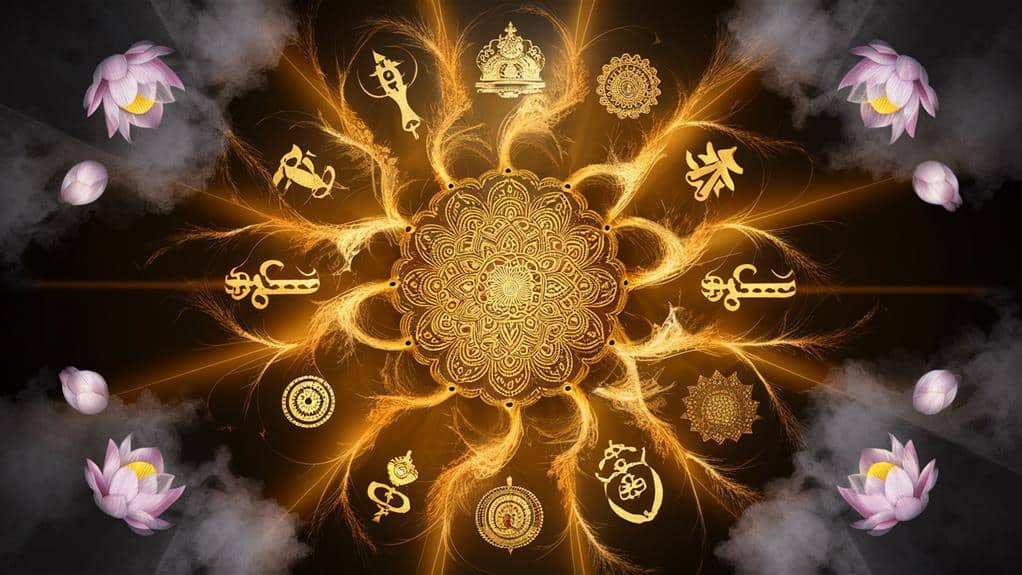
Despite academic critiques, perennial philosophy has substantially influenced modern interfaith dialogue. You’ll find its impact most evident in how it’s enabled diverse religious traditions to discover their shared mystical foundations, creating bridges of understanding that transcend doctrinal differences.
When you explore interfaith gatherings today, you’re likely to encounter perennialist concepts that highlight the universal quest for divine truth. This philosophical framework has transformed how you might approach religious differences, offering a lens through which you can recognize the underlying unity within spiritual diversity.
You’ll notice how perennial philosophy’s emphasis on transcendent truth has created safe spaces where practitioners from different faiths can share their mystical experiences without compromising their individual traditions. It’s shaped a dialogue that doesn’t seek to homogenize beliefs but rather celebrates the various paths leading to ultimate reality.
Through this approach, you’re invited to see how Buddhist meditation, Sufi contemplation, and Christian mysticism might be expressing parallel truths through different cultural languages. The perennialist perspective continues to serve as an essential foundation for meaningful interfaith encounters, helping you navigate the complex landscape of global spirituality.



